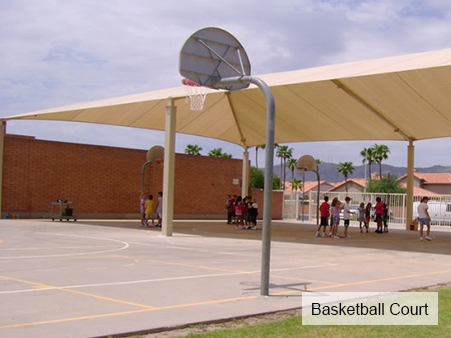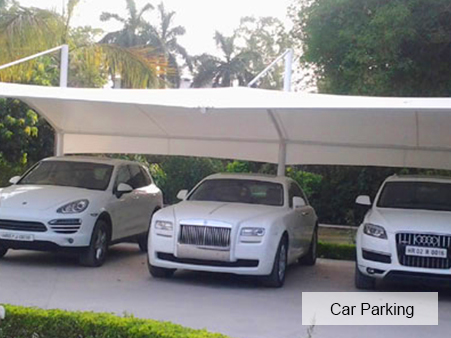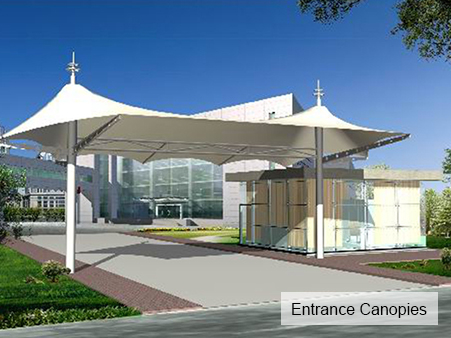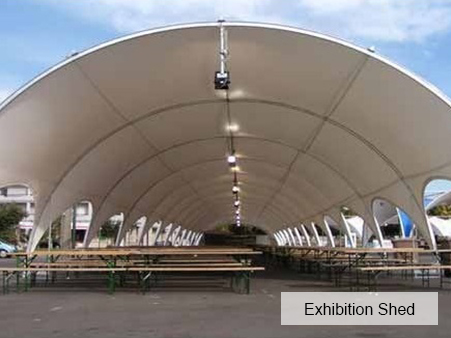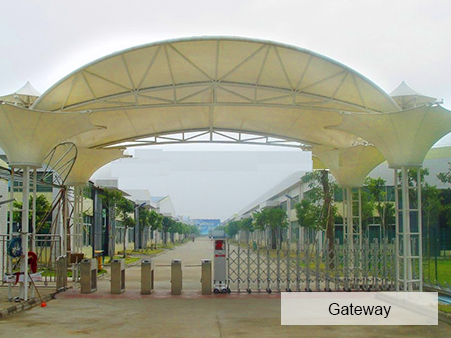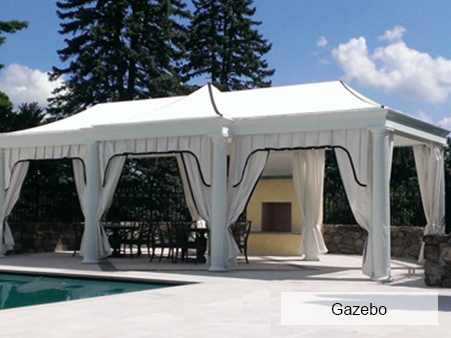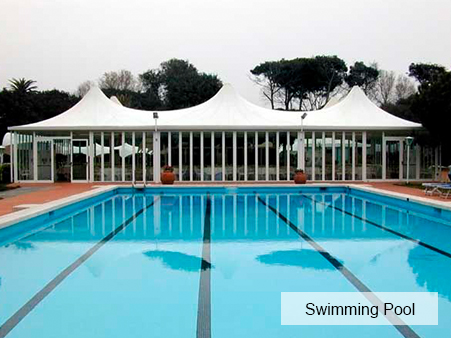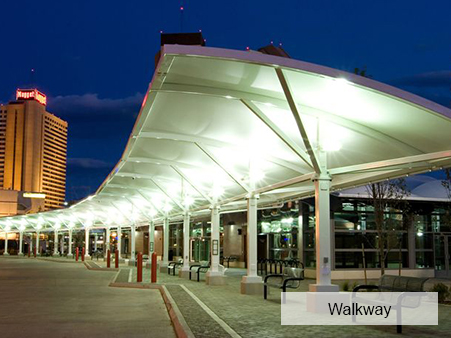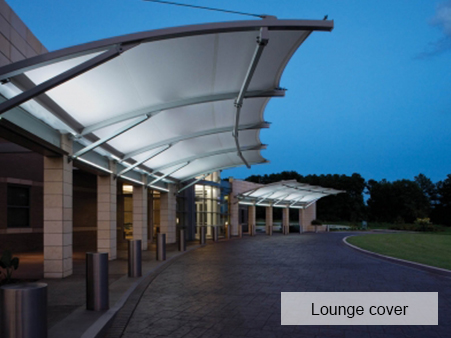Tensile Structures
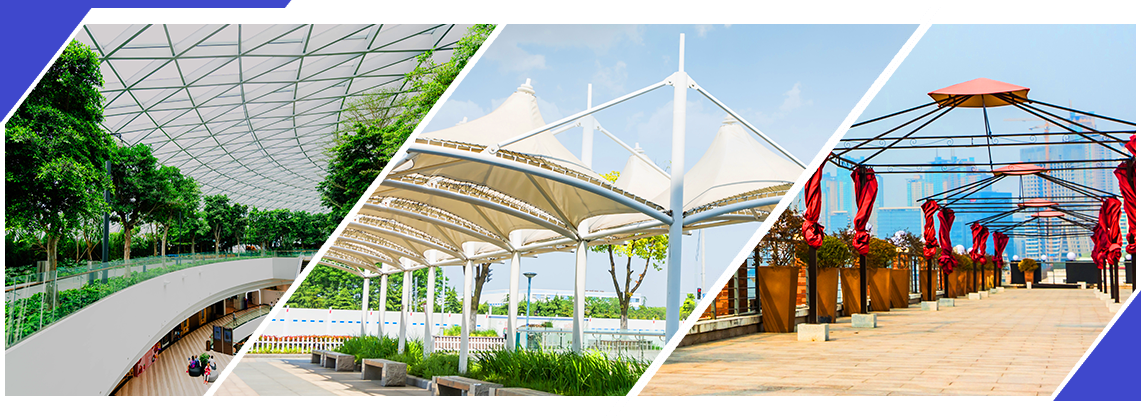
Tensile structures are architectural forms that rely primarily on tension (pulling forces) rather than compression or bending to maintain their shape and stability. They are typically made from a combination of lightweight materials such as fabric membranes (like PTFE or PVC-coated polyester), steel cables, and support masts.
 Key Characteristics:
Key Characteristics:
- Formed under tension: Structural integrity is achieved by stretching materials into shape.
- Lightweight and flexible: These structures use minimal material compared to traditional construction.
- Architecturally expressive: Known for their fluid, sculptural, and futuristic appearance.
 Components of a Tensile Structure:
Components of a Tensile Structure:
- Fabric Membrane – The main surface, designed to carry tensile loads.
- Steel Cables – Support and tension the membrane.
- Support Structure – Masts or compression elements (poles, arches, frames) anchor and stabilize the system.
- Anchoring Systems – Secure the structure to foundations or ground points.
 Advantages:
Advantages:
- Lightweight – Requires less structural support, reducing foundation costs.
- Quick Installation – Prefabricated and assembled on-site.
- Spanning Capability – Can cover large areas with minimal supports.
- Aesthetic Appeal – Visually dynamic and modern.
- Daylighting – Translucent membranes allow natural light.
 Common Applications:
Common Applications:
- Stadiums and sports arenas
- Outdoor canopies and walkways
- Exhibition pavilions
- Airport terminals
- Temporary or event structures
- Rooftops
 Sustainable Design:
Sustainable Design:
Tensile structures are considered environmentally friendly due to:
- Minimal material usage
- Recyclable components
- Reduced energy during transport and construction
- Potential for natural ventilation and daylighting
 Summary:
Summary:
Tensile structures offer a compelling blend of engineering efficiency, aesthetic freedom, and sustainability. Ideal for both temporary and permanent applications, they are widely used in modern architecture to create iconic, open, and adaptable spaces.

![]() Key Characteristics:
Key Characteristics:![]() Components of a Tensile Structure:
Components of a Tensile Structure:![]() Advantages:
Advantages:![]() Common Applications:
Common Applications:![]() Sustainable Design:
Sustainable Design:![]() Summary:
Summary: